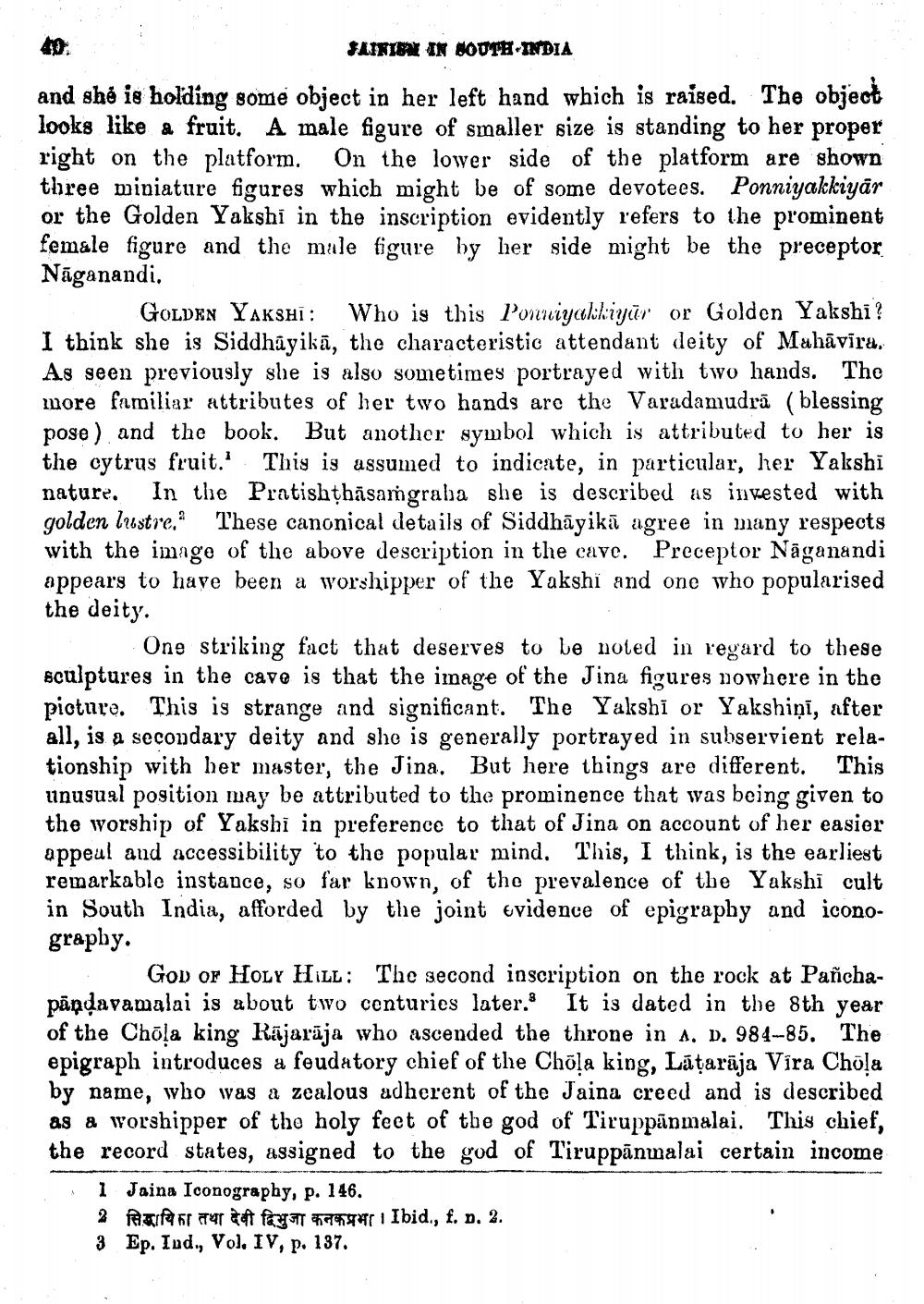________________
FLIKIH
IN HOUTH INDIA
and she is holding some object in her left hand which is raised. The object looks like a fruit. A male figure of smaller size is standing to her proper right on the platform. On the lower side of the platform are shown three miniature figures which might be of some devotees. Ponniyakkiyar or the Golden Yakshi in the inscription evidently refers to the prominent female figure and the male figure by her side might be the preceptor Nāganandi.
GOLDEN YAkshi: Who is this Ponniyakkiyür or Golden Yakshi? I think she is Siddhûyikā, the characteristic attendant deity of Mahāvīra. As seen previously she is also sometimes portrayed with two hands. The more familiar attributes of her two hands are the Varadamudrā (blessing pose) and the book. But another symbol which is attributed to her is the cytrus fruit. This is ussumed to indicate, in particular, her Yakshi nature. In the Pratishthāsamgraba she is described as invested with golden lastre. These canonical details of Siddhāyikā agree in many respects with the image of the above description in the cave. Preceptor Nāganandi appears to have been a worshipper of the Yakshï and one who popularised the deity.
One striking fact that deserves to be noted in regard to these sculptures in the cave is that the image of the Jina figures nowhere in the picture. This is strange and significant. The Yakshi or Yakshiņī, after all, is a secondary deity and she is generally portrayed in subservient relationship with her master, the Jina. But here things are different. This unusual position may be attributed to the prominence that was being given to the worship of Yakshi in preference to that of Jina on account of her easier appeal and accessibility to the popular mind. This, I think, is the earliest remarkable instance, so far known, of the prevalence of the Yakshi cult in South India, afforded by the joint evidence of epigraphy and iconography.
GOD or Holy Hill: The second inscription on the rock at Panchapāņdavamalai is about two centuries later. It is dated in the 8th year of the Chola king Rājarāja who ascended the throne in a. D. 984-85. The epigraph introduces a feudatory chief of the Chola king, Lāțarāja Víra Chola by name, who was a zealous adherent of the Jaina creed and is described as a worshipper of the holy feet of the god of Tiruppānmalai. This chief, the record states, assigned to the god of Tiruppānmalai certain income 1 1 Jaina Iconography, p. 146.
% af hrater a fer 999 1 Ibid., f. p. 2. 3 Ep. Iud., Vol. IV, p. 137.




